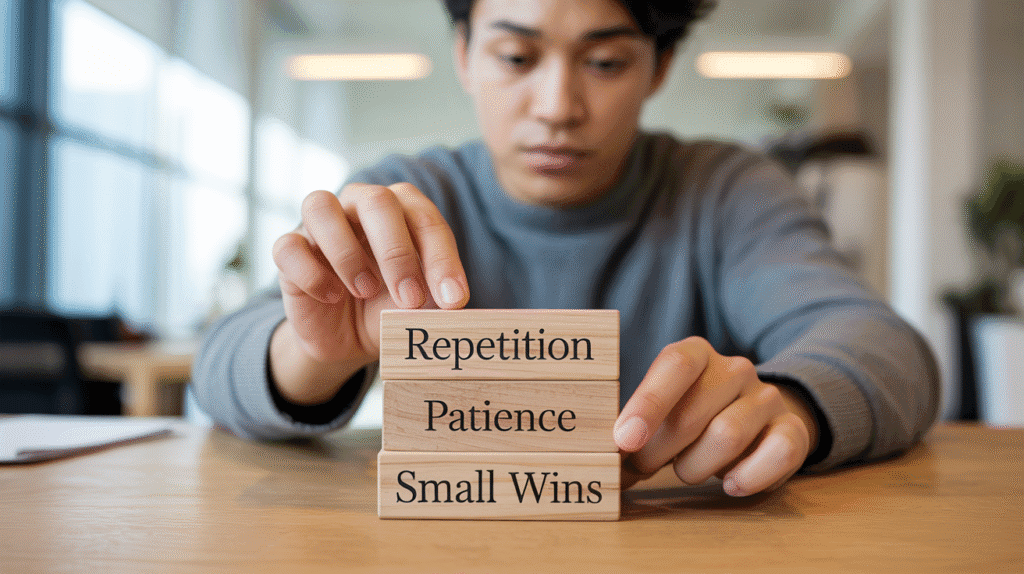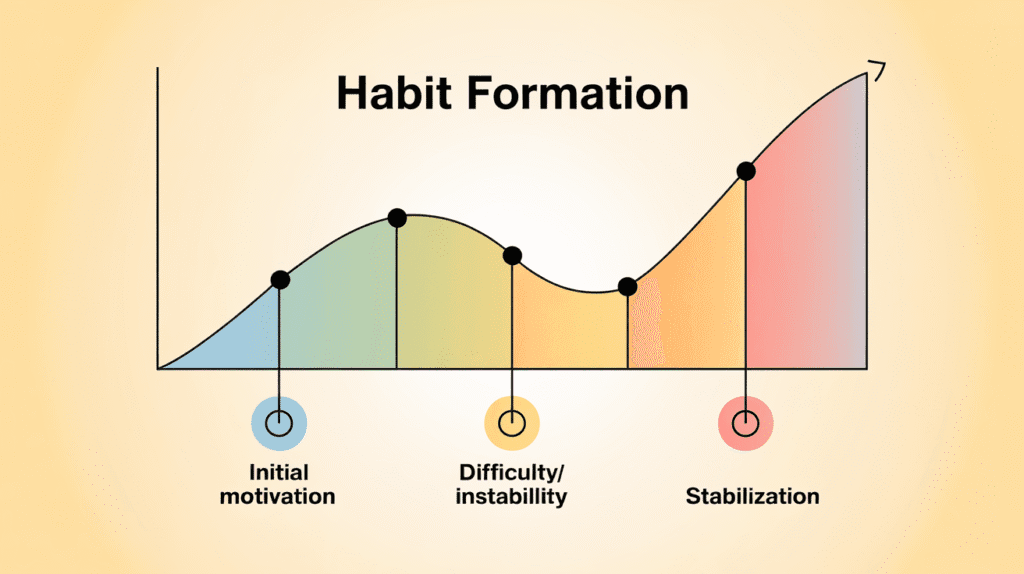
Starting a new habit feels exciting. Whether it’s hitting the gym, eating healthier, or waking up earlier, there’s an undeniable energy that comes with setting a fresh goal. We imagine ourselves a month later — fitter, sharper, more disciplined — and it fuels our initial drive.
But then, somewhere between day 10 and day 25, things start to slip. Work gets hectic, motivation fades, and suddenly that shiny new habit feels more like a burden than a breakthrough. Sound familiar? If it does, you’re not alone — and it’s not a personal failing.
Science shows that most new habits crumble within the first 30 days because of how our brains work, how we set expectations, and how we react to the inevitable friction of change. Understanding these hidden forces is key to finally beating the cycle.
In this article, we’ll dive deep into the real reasons behind early habit failure — and more importantly, how you can outsmart them to build lasting, meaningful change.
The idea that it takes exactly 21 days to form a new habit is one of the most persistent myths in self-improvement culture. It’s appealing — neat, simple, and promising fast results. But like many ideas that spread quickly, it’s also misleading.
The “21 days” concept traces back to Dr. Maxwell Maltz, a plastic surgeon in the 1950s who observed that it took about three weeks for his patients to adjust to changes in their appearance. While his observation was interesting, it wasn’t about forming new habits at all — yet over time, the number was adopted as a universal truth without scientific backing.
Modern research paints a very different picture. A 2009 study by University College London found that, on average, it takes 66 days to form a habit — and the range is massive, from 18 days to 254 days depending on the behavior, the person, and the circumstances. Habits tied to simple actions (like drinking water after breakfast) formed faster, while complex behaviors (like doing 30 minutes of exercise daily) took much longer.
This matters because expecting a habit to solidify in just 21 days sets people up for disappointment. When change doesn’t feel automatic after three weeks, many assume they’ve failed, when in reality, they’re just entering the messy middle phase that’s entirely normal. Understanding that habit formation is a process, not an event, reshapes expectations — and can make the difference between quitting and pushing through.

Building a habit isn’t just about willpower — it’s about physically rewiring your brain. Every time you repeat an action, your brain strengthens a specific neural pathway. Think of it like carving a trail through a dense forest: the more you walk it, the clearer and easier it becomes.
In the early stages, this pathway is fragile. You have to consciously push yourself to act because the brain hasn’t yet automated the behavior. That’s why those first few weeks feel like such a struggle — you’re literally creating a new route where none existed before.
Over time, through repetition and consistency, the brain begins to favor the new pathway. Tasks that once required effort become more automatic, like brushing your teeth or tying your shoes. Neuroscientists call this process “myelination,” where the brain reinforces frequently used neural circuits, making them faster and more efficient.
However, the brain also has a natural bias toward efficiency. If a new habit feels difficult or inconvenient, the brain subtly nudges you back toward old, easier behaviors. This is why missing a few days early on can feel so destabilizing — your brain is quick to default to what it already knows. Recognizing this bias helps you stay patient and committed, understanding that discomfort is a signal of growth, not failure.
Even when you understand the science of habits, psychological traps can still sabotage your efforts — often without you even noticing. These hidden pitfalls explain why so many good intentions fizzle out before real change takes root.
One of the biggest traps is setting unrealistic expectations. When you aim for massive, immediate transformation — like working out six days a week after months of inactivity — you set yourself up for failure. Big goals aren’t bad, but if the first steps are overwhelming, your brain resists, interpreting the task as a threat rather than a challenge.
Another common mistake is depending too much on motivation. Motivation feels powerful at first, but it’s notoriously unstable. It rises and falls with your mood, energy levels, and daily stresses. When motivation inevitably dips, if you haven’t built strong systems around your habit (like routines or environmental triggers), you’re left vulnerable to giving up.
Finally, many people neglect their environment. Your surroundings either support or sabotage your habits. For example, trying to eat healthy with junk food visible everywhere is a constant mental battle. Successful habit builders tweak their environment to make good behaviors easier and bad ones harder — like setting workout clothes by the door or keeping healthy snacks visible.
Recognizing these traps helps you plan better. Instead of relying on willpower alone, you create a system where doing the right thing becomes the path of least resistance.

Building habits that survive the critical first month isn’t about making huge leaps — it’s about stacking small, smart choices consistently. When you design your habits thoughtfully, you give yourself a real chance to push past the early friction and move toward lasting change.
One of the most powerful strategies is starting small. Tiny habits — like doing just two pushups or writing one sentence a day — feel almost too easy to skip. But that’s the point: they lower the psychological barrier to action. Over time, these small wins accumulate into something bigger without overwhelming your brain’s natural resistance to change.
Shaping your environment is another crucial tactic. If you want to drink more water, keep a water bottle within arm’s reach. If you want to read more, leave a book on your pillow. The fewer obstacles between you and the desired behavior, the more likely the habit will stick. Environment acts as a silent partner that nudges you toward success without requiring constant effort.
Finally, measure success by consistency, not perfection. Missing a day doesn’t erase your progress — giving up because you missed a day does. Reframe the process: every imperfect repetition still strengthens the habit pathway. Embracing imperfection not only builds resilience but also keeps you in the game long enough for real transformation to happen.
Changing your life through new habits isn’t about quick wins or bursts of motivation. It’s about understanding the invisible forces at play — the way your brain resists change, the myths that set unrealistic expectations, and the subtle traps that can derail your efforts early on.
When you recognize that habit formation is a long game, you take back control. Instead of feeling like you’re failing when things get tough after a few weeks, you realize you’re exactly where you’re supposed to be — in the messy, crucial middle where real transformation happens.
The first 30 days aren’t a test of willpower; they’re a training ground for persistence, patience, and smart system design. With the right mindset and strategies, you can move past the struggle and into the stage where your habits stop feeling like work — and start becoming part of who you are.
Lasting change isn’t about being perfect. It’s about staying in the game long enough for your brain, your identity, and your environment to catch up with your goals.

Daniel Carter believes that small daily changes lead to extraordinary results. Through simple and effective strategies, he inspires readers to take control of their routines, overcome procrastination, and unlock their full potential.